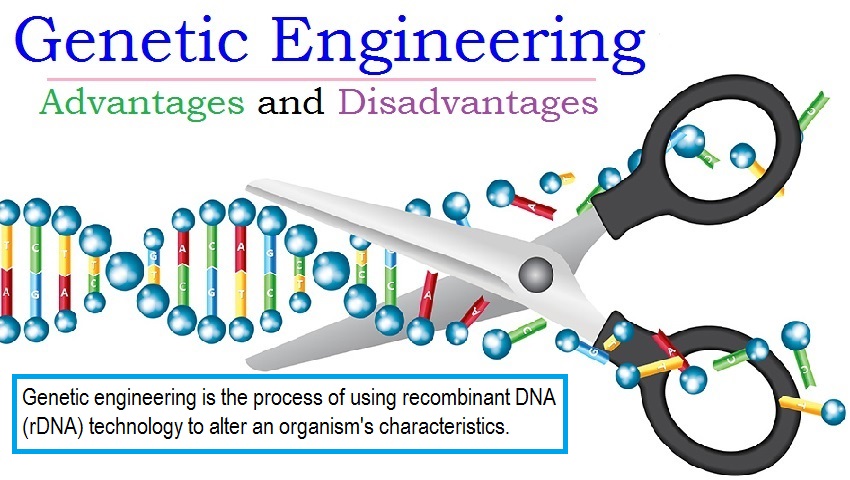Advantages and Disadvantages of Genetic Engineering

Genetic engineering, like any technology, comes with its own set of advantages and disadvantages. Here's an overview of the pros and cons associated with genetic engineering:
Advantages of Genetic Engineering:
-
Disease Prevention:
- Identification and Modification: Genetic engineering allows the identification and modification of genes associated with hereditary diseases, offering the potential for disease prevention or mitigation.
-
Medical Advances:
- Gene Therapy: Genetic engineering is instrumental in the development of gene therapy, aiming to treat or cure genetic disorders by introducing, repairing, or replacing defective genes.
- Pharmaceutical Production: Genetically modified microorganisms can be used to produce pharmaceuticals, including insulin and vaccines.
-
Agricultural Improvements:
- Increased Crop Yield: Genetic engineering enables the development of crops with improved resistance to pests, diseases, and environmental stressors, leading to increased agricultural yield.
- Nutritional Enhancement: Genetically modified crops can be engineered to enhance nutritional content, addressing issues such as vitamin deficiencies.
-
Biotechnological Applications:
- Bioproduction: Genetic engineering is essential for creating organisms that produce valuable proteins, enzymes, and biofuels.
- Synthetic Biology: Advances in synthetic biology allow the creation of entirely new biological systems for various applications.
-
Environmental Benefits:
- Bioremediation: Genetically engineered organisms can be designed for environmental cleanup, breaking down pollutants and contaminants.
- Conservation: Genetic engineering can contribute to conservation efforts by enhancing the genetic diversity of endangered species.
Disadvantages of Genetic Engineering:
-
Ethical Concerns:
- Designer Babies: The ability to manipulate the human germline raises ethical concerns, particularly regarding the creation of "designer babies" with specific traits.
- Privacy Issues: Genetic information privacy concerns may arise, especially with the increasing availability of genetic data.
-
Environmental Risks:
- Ecosystem Impact: The release of genetically modified organisms into the environment may have unintended consequences, affecting non-target species and ecosystems.
- Unintended Consequences: There is a risk of unintended ecological consequences if genetically modified organisms interact with the natural environment in unexpected ways.
-
Social Equity:
- Access Disparities: Concerns exist about unequal access to genetic technologies and benefits, leading to social and economic disparities.
- Genetic Discrimination: There is a potential for genetic information to be misused, leading to discrimination in areas such as employment and insurance.
-
Unintended Consequences:
- Long-Term Effects: The long-term effects of genetic modifications, especially those introduced into the germline, may not be fully understood, posing potential risks.
- Unintended Mutations: Genetic engineering processes may introduce unintended mutations, leading to unpredictable outcomes.
-
Biosecurity Concerns:
- Bioterrorism Risk: There are concerns about the potential misuse of genetic engineering for bioterrorism, including the intentional creation of harmful organisms.
- Accidental Release: The unintentional release of genetically modified organisms poses a risk to ecosystems and human health.
-
Regulatory Challenges:
- Regulatory Framework: Developing appropriate regulatory frameworks for the responsible use of genetic engineering is an ongoing challenge.
- Risk Assessment: Assessing and managing the risks associated with genetic engineering technologies can be complex.
In conclusion, while genetic engineering offers numerous potential benefits in medicine, agriculture, and biotechnology, it also raises significant ethical, environmental, and social challenges. A balanced and responsible approach, including robust regulatory frameworks and ethical guidelines, is crucial to harness the benefits of genetic engineering while minimizing potential risks.
Thank you.
